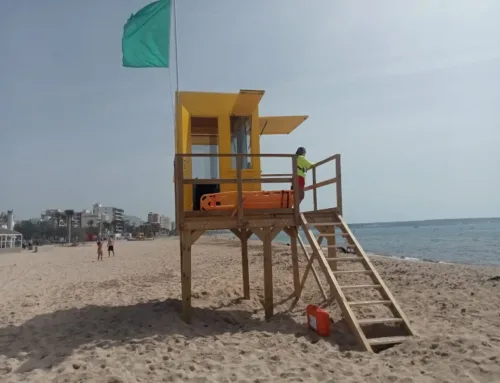
Natalia Bueno en su despacho.
The increase in demographic pressure, the lack of space and the paralysis of new construction are the breeding ground for prices to continue rising in 2023, according to the president of the Association of Real Estate Agents of the Balearic Islands.
-New housing has risen by 9.1% in the Balearic Islands in 2022, according to a report by Sociedad de Tasación. What factors explain this steep increase (the highest in Spain)?
-It is necessary to distinguish the appraisal companies from the real values published periodically by the property registrars. The latest publication made by the Land Registry in the third quarter of 2022 indicates that there is an average price drop in the Balearic Islands of 3.1%, both in new and used housing. But it is true that we have a cumulative rise for the year, since January, of 13.1%. We will have to wait until February, with the publication of the results for the fourth quarter of 2022, to see whether this trend has continued in recent months or whether it has continued to rise. However, the rise over the year as a whole is noteworthy; it is above the CPI, both in new and second-hand properties.
We have a cumulative increase for the year of 13.1%.
-How much does new housing represent in the total number of sales?
-It does not even reach 10%. The total number of new homes is very small. Just look at how many cranes you see, very few. There are very few developers, expensive land and building materials, the numbers don’t come out… They only come out in everything that is destined for the foreign market, which has more purchasing power. The local residential market is around €5,000 per square metre and also aimed at medium-high incomes. Scarce and expensive. That is what we have in new construction right now in the Balearics.
-And what is the situation of the second-hand market?
-As an autonomous community, the Balearic Islands has the highest average price in Spain, which is 3,082 € per square metre. By cities, Palma has 3,122 € per square metre, below Madrid, Barcelona and San Sebastián, the only cities that exceed this figure. The average price in Spain is 1,958 € per square metre. The difference is very significant and this has a direct impact on the average amount of mortgages taken out.
-How much are we mortgaging for in the islands?
-The average that has been requested is €253,000, which is also much higher than the national average. The average monthly repayment for all of us who are mortgaged here is €1,157 per month. Compared to Extremadura, where the average mortgage is less than €400 a month… The extra effort that Balearic residents have to make to buy a home and even to rent it is well above the national average. There is a call for a rise in salaries to bring them up to the standard of living that not all companies with profits are passing on. If this does not happen, we will see more and more people at risk of social exclusion and with serious difficulties in accessing even the rental market.
The average mortgage is at €253,000, well above the national average.
-Also with exorbitant prices?
-The rental market is one of the most expensive in Spain. We have an average of approximately €12 per square metre, but in many specific cases it doubles. On the island of Ibiza and Formentera too. Not everyone can afford to pay more than €1,000 a month for a 100 square metre property.
-What is the outlook for 2023, and are prices expected to continue to rise?
-We have an occupancy rate that is the best in Spain as an autonomous community (we have almost full employment). This is also a knock-on effect for the emptying of Spain. And let’s not forget the number of foreigners buying first and second homes in the Balearics, from central and northern Europe. With demographic pressure that continues to rise, limited space, new construction at a standstill… Everything is practically centred on second-hand housing. If demand is not curbed, prices will continue to rise. That’s for sure.
-What can be done from the public sector?
-For the rental market, there are measures that have been in place for years that help the most disadvantaged families to pay rent. The social housing currently being built by the Balearic Government is all destined for the rental market; no more will be built for sale.
Tax incentives should be given to owners who rent up to certain prices and to certain groups.
-Should the price of rent be limited?
-We are not in favour of making it compulsory, as demanded by some political sectors and also by a significant part of society, because we have seen how supply has fallen where it has been introduced, but there should be tax incentives for landlords who rent up to certain prices and to certain groups. They should have a higher rent exemption than the current 60% because they will be performing a social function and therefore they should benefit in that sense.
Then also offer legal guarantees in the event of non-payment. We have a significant amount of closed housing and in most cases they are owners who are afraid of having a bad experience with tenants. They are afraid of ending up in court for non-payments, of having to hand over destroyed houses, etc. We should guarantee landlords the collection of rent and, if they have to go through a judicial process, it should be swift, not take months.







Leave A Comment